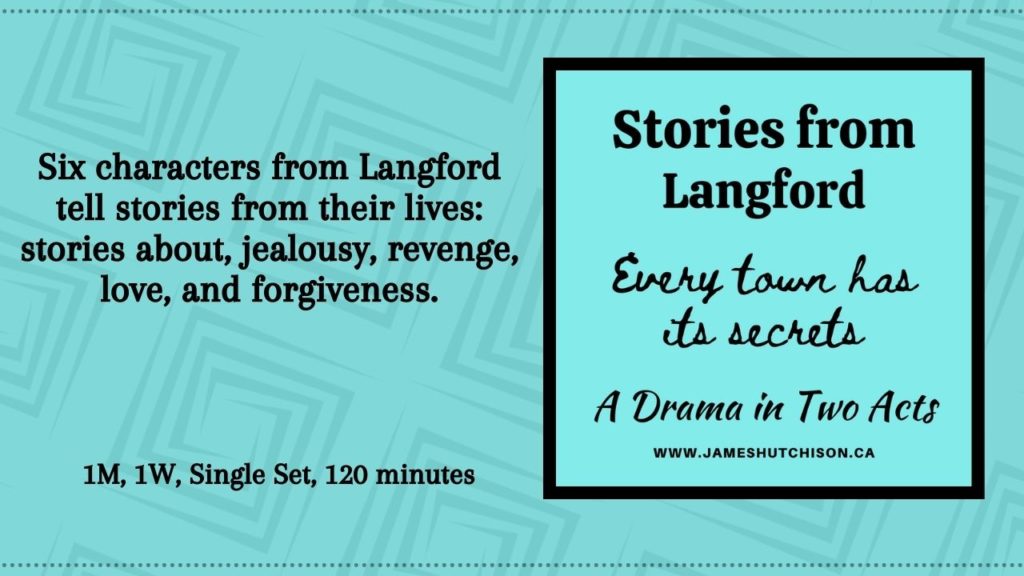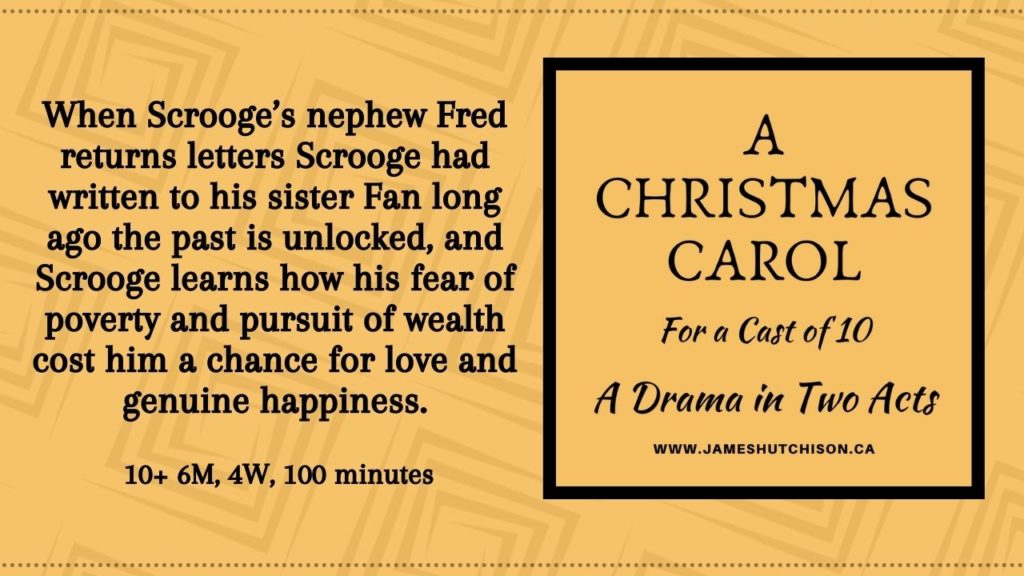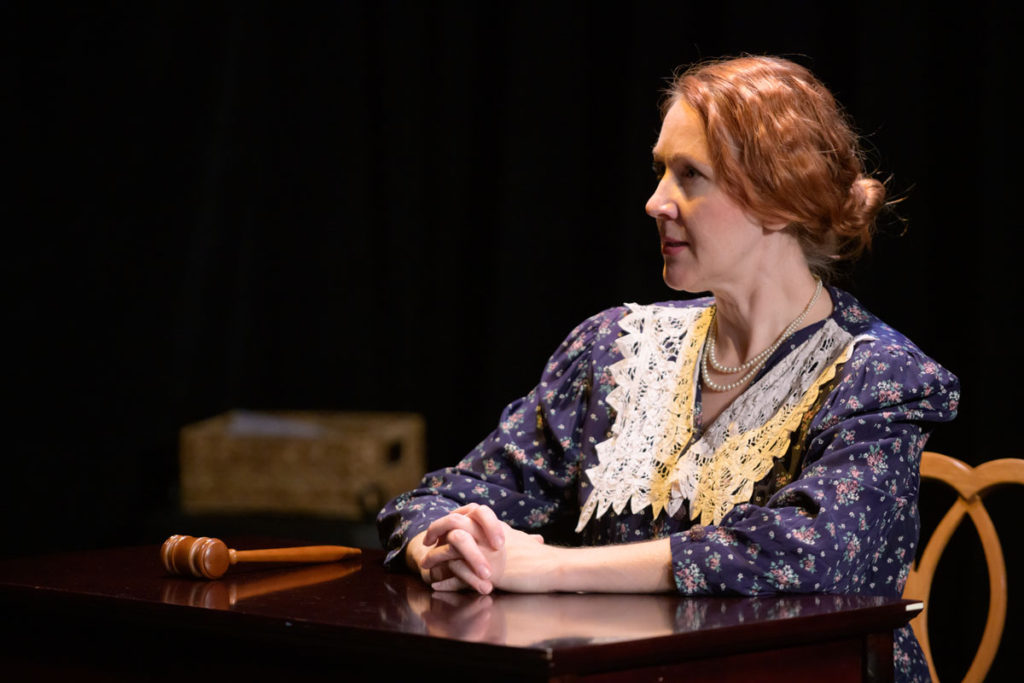
Playwright Caroline Russell-King has been writing plays and entertaining audiences for more than forty years. Her Palliser Suite trilogy of one-act comedies which all take place at the Palliser Hotel in Calgary was shortlisted for the National Steven Leacock Award for humour. Her play Selma Burke, which she co-wrote with Maria Crooks, and is about the life and work of African American sculptress Selma Burke was shortlisted for this year’s Sharon Pollock Award. And her most recent play High and Splendid Braveries explores addiction, women’s rights, and prohibition all told through the life and times of Emily Murphy one of The Famous Five. Not only is Caroline a gifted playwright but she’s also a dramaturg, theatre critic, and ghostwriter. You can find out more information about her plays and professional services by visiting her website at www.carolinerusselking.com.
I saw High and Splendid Braveries a few nights ago in The Motel at the Arts Commons and I’m happy to report that it’s a play filled with wonderful moments – funny, tragic, heartbreaking, and triumphant all brought to life by a powerful script and a terrific cast of five actors playing multiple roles. The Famous Five were five Alberta women who lead the fight to have Canadian women recognized constitutionally as persons. Emily Murphy led the battle and was supported by Irene Parlby, Louise McKinney, Henrietta Muir Edwards, and Nellie McClung. Their case was rejected by The Supreme Court of Canada in 1928, but the Judicial Committee of the British Privy Council, which was the highest court in the land at the time, decided in favour of the women on October 18, 1929.
I sat down with Caroline to talk with her about High and Splendid Braveries and the journey the play took to go from page to stage.
JAMES HUTCHISON
Initially, you wanted to write a play about The Famous Five but felt that a two-hour play simply couldn’t capture the lives of all these women, and you found that one voice above the others began to speak to you. Tell me about that process and the years it took to go from your original inspiration to a finished play.
CAROLINE RUSSELL-KING
Well, the truth of the matter is that I didn’t know anything about them. I was woefully ignorant. And so, I was reading an article in Avenue magazine, and it was about the first unveiling of the statues of The Famous Five in Calgary, and I thought, “Oh, that’s interesting.” And in the back of my head I thought, “Oh, that’s a good Alberta Foundation for the Arts grant because it’s about women’s history, and somebody will fund me to write a play about that.” And then I started researching these women and I started falling in love with these women and being awestruck by these women and being completely swayed by them.
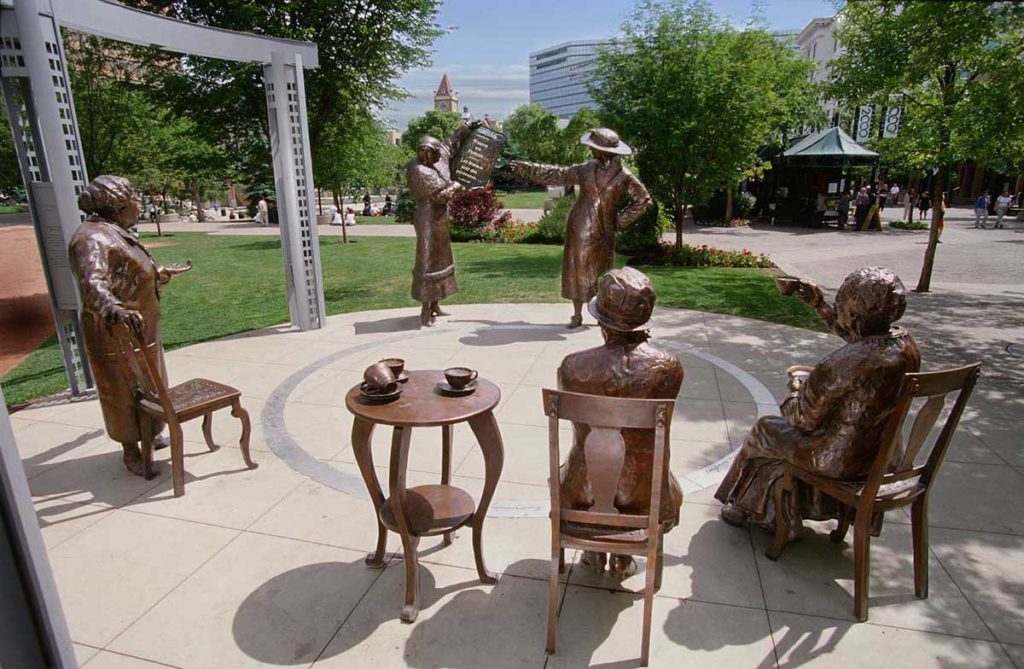
So, I did a lot of research. I read their books, and I went to Ottawa and put on the white gloves and looked at the original correspondence in the archives, and I had some copies of that sent to me. I did interviews with people including Frances Wright who’s the CEO of The Famous 5 Foundation, and my mother-in-law Angela Matthews was a contributor and supporter of The Famous Five, and I’m not sure exactly how it happened, but I got invited to the inner circle and unveiling of The Famous Five Statues on Parliament Hill. So, I got to meet The Prime Minister, Jean Chretien, and go into the Senate and meet the senators and have cocktails with Margaret Trudeau. And that was interesting because that’s where I first started thinking about loss. There were lots of activities going on at the time, and I fell down that whole rabbit hole of research, and then I started writing the play.
And the play was too much. There were too many storylines and too many parts. And I thought I can’t write about The Famous Five. I have to focus on one. So, the one I was most attracted to was Emily, and a lot of people have written about Nellie. There are a lot of Nellie plays out there. But I thought of Emily because she was literally the driving force behind getting this thing done.
People think the story is about women wanting to become persons. Well, we already knew we were persons. So, what did Emily really want? I followed that thread, and I read her book, The Black Candle, which was the first seminal book of research at the turn of the 20th century about opioids in Canada.
She went into drug dens and interviewed people and tried to make systemic change and tried to save lives. She was exposed to the idea of harm reduction. We think of harm reduction as being a new thing, but it isn’t. She would have been appalled at the closing of safe injection sites. She was really ahead of her time in a lot of ways. She was trying to save lives and stop the flow of opium. She was amazing. She was a neat broad. I liked her a lot.
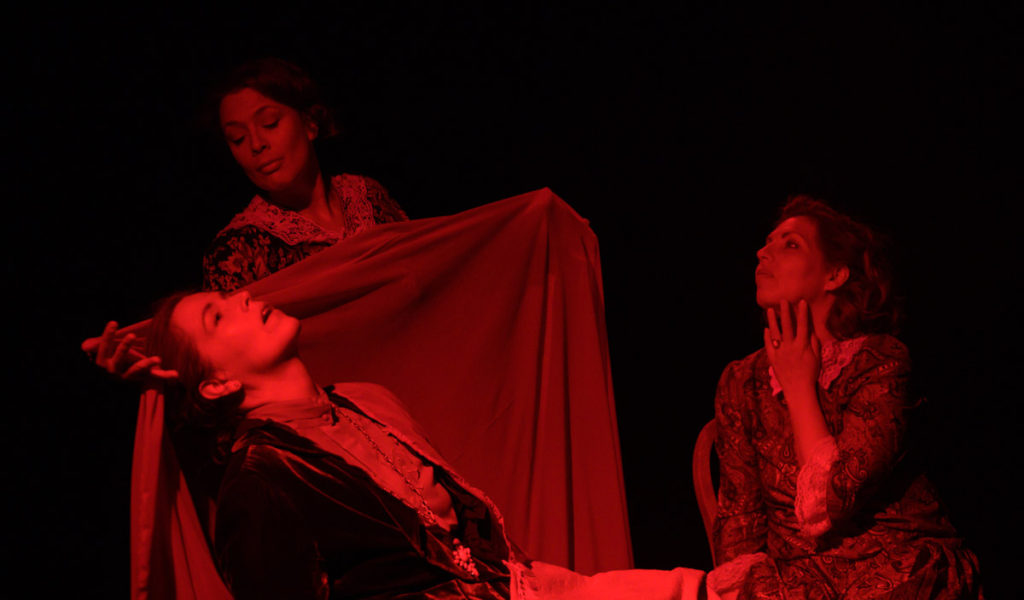
JAMES
You said in the introduction to your play that she whispered to you in the night.
CAROLINE
You know what it’s like. You’re a playwright. You know what they do. They wake you up and they start talking to you and then you have to grab a pen and start writing it down.
JAMES
It makes our job easier.
CAROLINE
It does.
JAMES
The play features five actors portraying multiple characters, and the play is very fluid in terms of moving between locations. And I think it’s very cinematic with short scenes, but you can follow the major narrative quite easily. Tell me about the team of people you’ve gathered together to bring High and Splendid Braveries to the stage and to life.
CAROLINE
I have my very good friend Elizabeth Stepkowski Tarhan directing the play. She’s a fairly new director, but she has a huge wealth of theatrical experience. She’s worked all over Canada in A houses with the best directors, and she brings with her this huge wealth and passion and rigour and care.
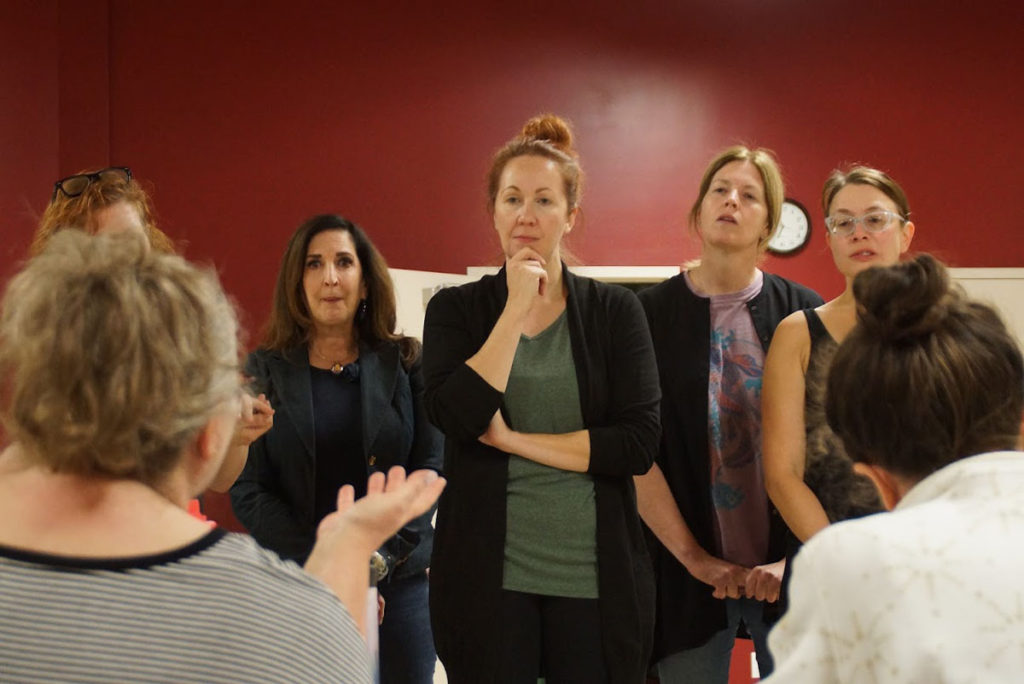
And I wanted to do it in the Arts Commons. That was important to me. I’d heard a rumour, and I don’t know if it’s true, but I’d heard a rumour that the land opposite the Arts Commons is going to be repurposed and that there was some threat that The Famous Five statues might actually be moved away from there. And I thought, “I have to do my play before the statues get moved.” So, I wanted a theatre in close proximity to the statues, and the simplest and easiest way to make that happen in six months was to co-produce the play with Urban Stories Theatre and Helen Young, who has been producing shows in the Motel for ten years.
The cast includes my really good friend Allison Smith, whom I’ve known for forty years, and she played a pregnant clown in one of my first plays at The Glenmore Dinner Theatre. She doesn’t like to talk about that. (Laughs) So, Alison Smith and Martina Laird-Westib, Shannon Leahy, and Tara Laberge. I had seen Tara Laberge in a Fire Exit show, and I was really impressed by her work. And we have Ginette Simonot. She’s a rock star.
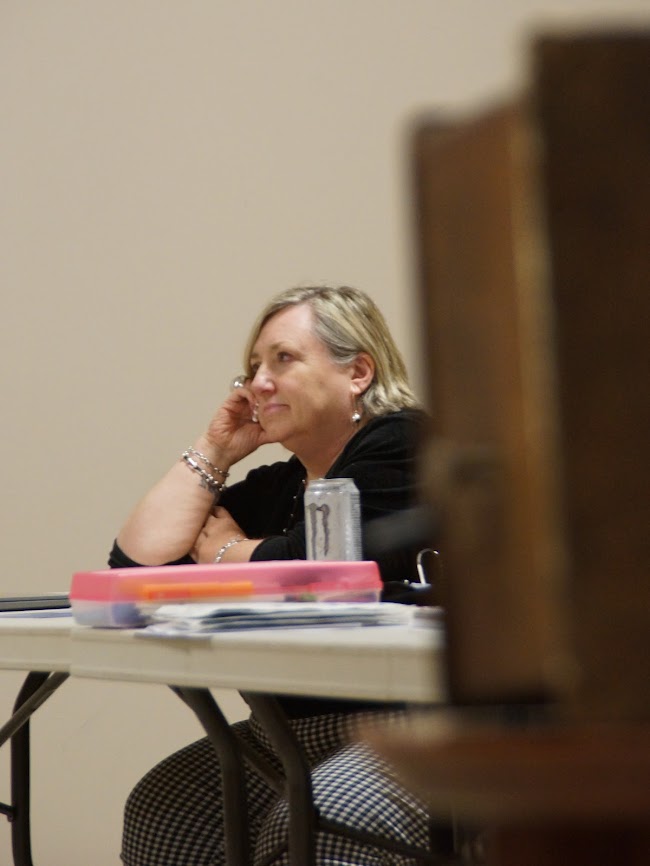
I couldn’t afford to put this show on with a full equity slate, so these are some of the best non-equity actors in town and what’s great about being a theatre critic is I’ve gone to a lot more theatre and seen a lot more people, and I’m always scanning for who’s out there and who is going to be somebody that I want to work with in the future. That’s how we got Tara Laberge, and then because of COVID we have an understudy – the lovely Tara Blue.
JAMES
One of the things I really liked about the play is that you let your characters speak from their particular perspective and the time in which they lived. So, we have characters voicing opinions and ideas that today we wouldn’t agree with but as an audience in 2022 we recognize the ideas as being out of step with how we think today. So, I’m curious to know your thoughts in terms of trying to be fair in presenting how these characters thought and still designing the play to reflect our modern views about some of the ideas you present.
CAROLINE
Well, it’s a conundrum, and it’s interesting because there’s been a shift towards taking those attitudes out of plays. I saw a play in the past year that was a historic piece that spoke so eloquently and so vocally about everything, but they wouldn’t have spoken like that at the time. They wouldn’t have said that. This voice is the voice of the playwright who wants to apologize for these characters. And because you’re a playwright you understand we want our characters to be flawed. We don’t want these perfect people doing perfect things in perfect situations with no conflict. That’s boring and unrealistic.
And The Famous Five, as they’ve come to be known, the more they get scrutinized under the microscope the more flawed they seem to people, and then people concentrate on those flaws as opposed to acknowledging the incredible amount of worth that happened because of these women. They literally changed the world.
I believe the audience is smart. I don’t like the term bums in seats. I like the term brains in seats. I think sometimes playwrights want to make things safe and spell stuff out or be superior in some ways, but I think the audience is bright and there are always going to be people in the audience that are smarter than I am.
JAMES
Do you think sometimes playwrights don’t want to be taken to task by presenting a controversial idea?
CAROLINE
Oh, absolutely. Absolutely. But you know it’s not my personality to shy away from controversy. I always say one of my worst flaws and one of my best flaws is that I’m not a people pleaser. That being said, I would like people to enjoy my art, but I don’t write thinking about pleasing certain people or certain elements of our society. That’s not where I come from.
I think we need to talk about the issues more, and I think we need to get out of our silos and talk about the things that matter. We need to build bridges. We need to be able to communicate with each other. I mean, the issue of drug addiction – how is that not bipartisan? How is it that not everybody wants to address poverty and healthcare? What kind of world are we trying to build? It’s scary when we can’t talk to each other.
JAMES
One of the things that makes your story real is that you deal with loss. Emily’s personal loss. Could you speak a little bit about including that in the play?
CAROLINE
That actually came out of talking to Margaret Trudeau because I thought there’s a woman I have nothing in common with. We’ve got our little sandwiches and our drinks, and her life and my life are completely different. But she had this enamel pin on which was a rose for her late husband, and she had lost her son. And we started talking about grief. And I thought, well, that is the universal thing that joins us all together. The older we get the more we’ve encountered loss and grief and I immediately started thinking about Emily and thinking about what the loss of a child would have been like for her. I think personally there is no greater loss than the loss of a child. A spouse is hideous, brothers and sisters are hideous, and parents are bad, but they come in order. You’re a father, you know. How would you come back from that, right? That should be another bipartisan thing. Who doesn’t care about that?
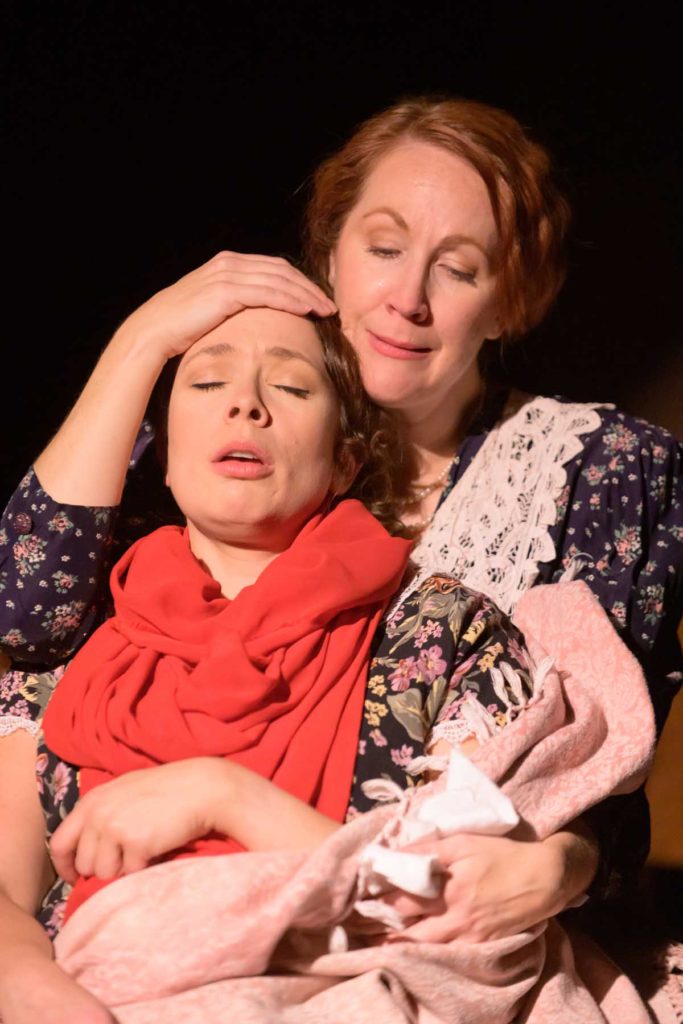
JAMES
I’ve seen you on social media where you do a thing called Pop Up Playwright. On your website you say, “Pop Up Playwright is about creating art in public spaces. Playwrights are generally not visible. Actors are visible. Directors are. Playwrights not so much. I think we need to come out of our offices and move away from the kitchen tables and go out. Much like painters, we need to set up our easels and create in public.” Tell me about the decision to create Pop Up Playwright and what it’s been like to create art in public.
CAROLINE
Oh, it’s fascinating. It’s been a great social experiment. I’ve done Pop Up Playwright in hospitals, airports, downtown, at City Hall, libraries, and once on the street. I have my Pop Up Playwright sign I put up, but I also put up a little plexiglass sign that will say something like, “Ask me questions about plays. Feel free to interrupt me.” I invite interactions with people.
It’s very strange because you’re regarded overwhelmingly with such suspicion and one of the things that I get asked all the time is, “What are you selling?” And while I am a dramaturg, I’m not out there trying to drum up business. It’s about having discussions about theatre with people who might not even go to theatre. I love talking to people about so many things and having people come over and ask, “What are you working on?” And I can say, “I’m writing this scene. I don’t think it’s very good right now, but I think I know how to fix it.”
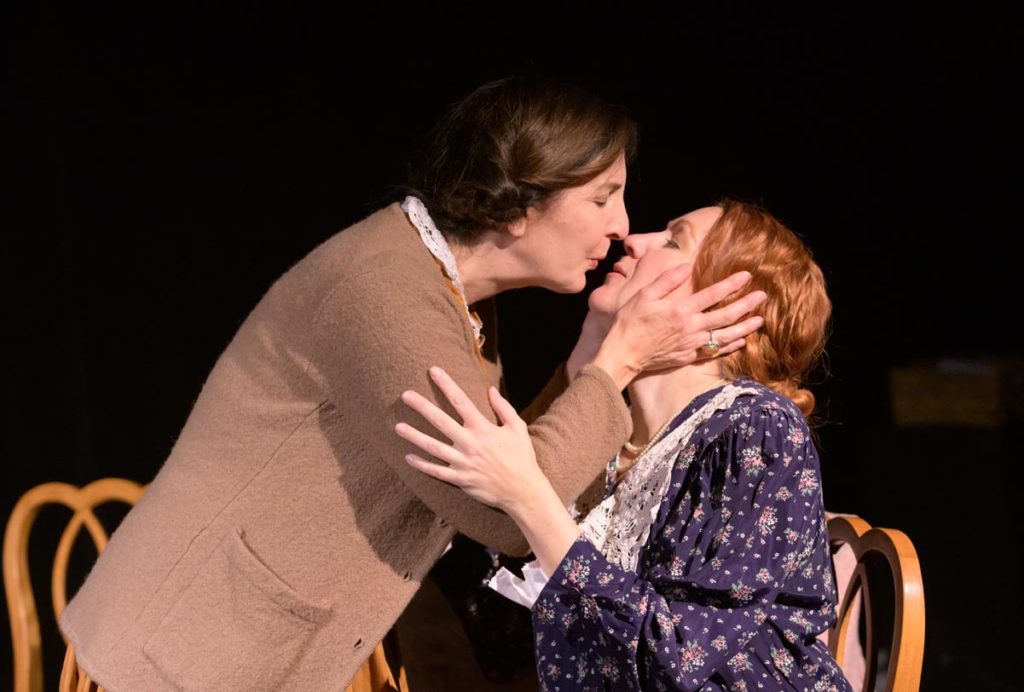
JAMES
So, now that the play is finished and it’s being produced what does Emily Murphy, the Emily Murphy who spoke to you in the middle of the night and whispered in your ear, what does she think of the play, and what do you hope comes out of this?
CAROLINE
At the moment she would channel Nellie McClung and say, “Get the thing done and let them howl.” The big dream would be to have it produced at the 100th anniversary of the Persons Case, which is in 2029. I’d like to get it on at the NAC, so I’d like the play to have a bigger profile. I think that’s the only time producers would consider putting it on at that level.
But the most important thing is that people come away from the play having had an entertaining night at the theatre. That they haven’t been lectured to. It’s not an infomercial. It’s not a heritage moment. It’s not a quaint little story about Little House on the Prairie women trying to do their thing. These are real women. These are flawed women. These are women who are fighters.
***
CAST & CREW
On a Dime Productions and Urban Stories Theatre presents High and Splendid Braveries by playwright Caroline Russell-King stars Tara Laberge, Allison Smith, Martina Laird-Westib, Ginette Simonot, Shannon Leahy, Tara Blue. Co-producers Helen Young & Caroline Russell-King, Director Elizabeth Stepkowski Tarhan, Stage Manager Andrea Cortes, Assistant Stage Manager Mary Bogucka, Assistant to the director and original music AJ Tarhan, Cello Morag Northey, Lighting Concepts Elizabeth Stepkowski Tarhan, Lighting Designer Calum Maunier, Lighting Tech Support Kai Hall.
